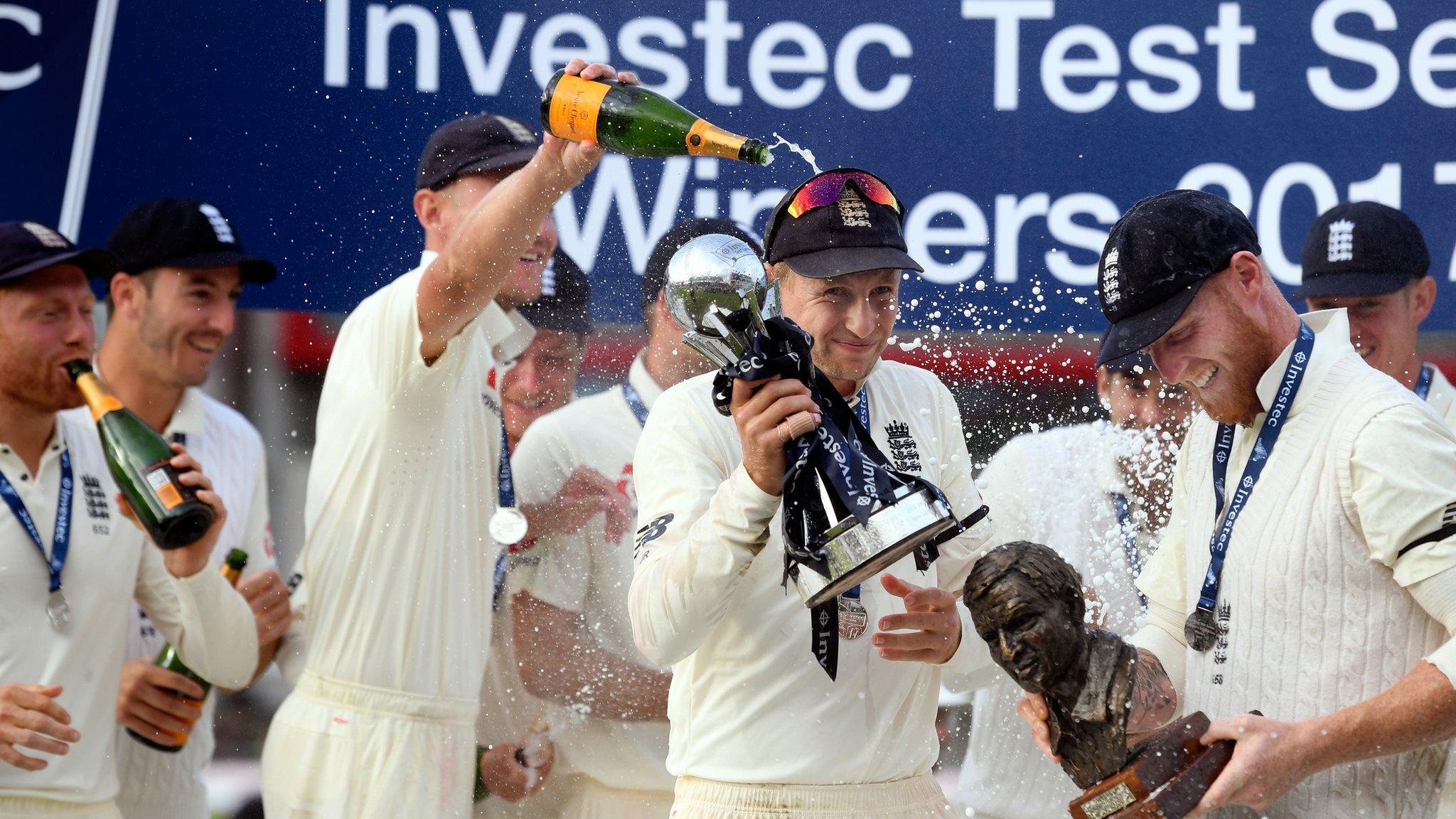Ashes 2017: How are England shaping up for winter tour of Australia?
- Published
- comments
It was an excellent result, but England will admit it didn't tell them much that they didn't already know.
Even coach Trevor Bayliss said the 3-1 series win against South Africa does not "paper over the cracks" in the batting line-up.
It is those cracks, aged and deep, that are most likely to be exploited on an Ashes tour of Australia, where even the most solid of cricketing structures can be torn to the ground - just ask the England class of 2013-14.
However, the batting order is not the only problem facing Bayliss and captain Joe Root before England play West Indies in three Tests on home soil, their last assignment before the trip to Australia.
Not who, but why?
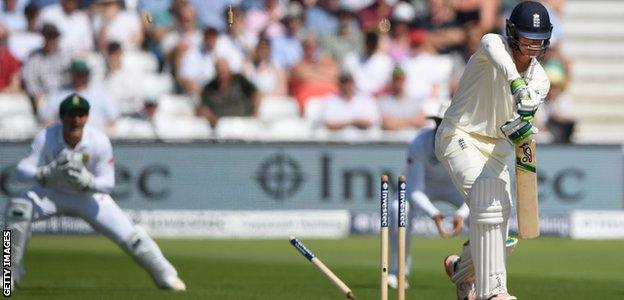
Keaton Jennings averaged 15.87 in four Tests against South Africa
The saga of England's opening batsmen is as self-fulfilling as the Strictly Come Dancing curse., external
Invariably, Alastair Cook gets a new partner and, six months later, he's gone.
But the struggles of Keaton Jennings - Cook's 11th partner in five years - detract attention from the issues in the middle order.
Since Bayliss took charge in the summer of 2015, England have chosen 18 players to bat in their top five, more than any other Test nation.
Cook and Root, the two constants in that period, average a combined 47.27. Between them, the rest have managed an average of 24.83.
Test cricket provides a forensic examination of a batsman's technique. Adam Lyth, James Vince, Ben Duckett, Gary Ballance and Alex Hales have had their flaws exposed.
It can also be argued that leading candidates in county cricket now have to do less to stand out from the crowd. All of Jennings, Tom Westley and Dawid Malan - current incumbents of Test spots - have first-class averages under 38.
Why is the domestic game failing to produce enough batsmen capable of succeeding at Test level?
"We have had so many players that have come in and failed because of poor technique," said former England batsman Geoffrey Boycott.
"We have a batting coach with England and at every county. We should be asking what they are getting paid for."
Selectors in a muddle?
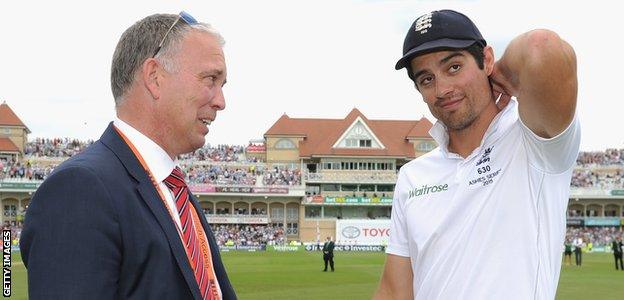
James Whitaker, left, is England's chairman of selectors
An extension of questioning why England cannot fill the vacancies in their batting line-up is to examine the selection policy in the Bayliss era.
Consider this. In Bayliss' 30 Tests in charge, 12 players have been given England Test debuts. None of those 12 has established himself at Test level, although it is too early to judge Westley, Malan and seamer Toby Roland-Jones.
In the worst examples of team selection, left-arm spinner Liam Dawson was given two Tests against South Africa - picked in part because of his good character, external - while white-ball specialist and back-up wicketkeeper Jos Buttler was seemingly recalled as a specialist batsman on last winter's tour of India just because there were no other options.
In comparison, in the 31 Tests before Bayliss arrived - a neat period because it goes back to when Cook took over as captain - England handed out 14 new caps, unearthing Joe Root, Ben Stokes, Moeen Ali, Mark Wood and Chris Woakes (admittedly, the latter has established himself under Bayliss).
There are mitigating circumstances. The selectors could not legislate for the cruel retirement of James Taylor in 2016 or the horrible domestic form of Haseeb Hameed this summer.
In addition, Bayliss, part of the four-man selection panel, gets to see next to no domestic cricket because of his international commitments and his home still being in his native Australia.
But the very notion of a selection panel - Bayliss, James Whitaker, Mick Newell and Angus Fraser - could be seen as outdated. The England football team dispensed with such a model in the days of Sir Alf Ramsey.
Could more responsibility be handed to Bayliss and Root, who would perhaps rely on the likes of Andy Flower, Graham Thorpe and Mark Ramprakash, all of whom are on the England payroll, to act as scouts?
Could Bayliss be freed up to watch more domestic cricket, rather than having to frequently admit that he has not seen a candidate for his squad play live?
"I don't understand the idea of an old-school selection panel," said former England captain Michael Vaughan. "The captain and coach are the people accountable for performance out in the middle, so they should pick the team.
"I wasn't a selector, but I had a huge input and I always got what I wanted. If I was interested in a player I would ring up a coach of a county, umpires, players and watch a little bit myself.
"There are so many people employed by England that they should have enough scouts. They can also watch every single ball of county cricket on a tablet - every batsman against every bowler."
A big winter for Bayliss
For the first time in his reign, Bayliss was under pressure following England's 340-run defeat by South Africa in the second Test at Trent Bridge.
Not only had the Australian admitted he was unable to have too strong a say on selection, but also that he did not get too involved in the hands-on coaching of the players. That begs the question: what does he do?
Ultimately, Bayliss will be judged on results.
In white-ball cricket, England are unrecognisable from the rabble dumped out of the 2015 World Cup.
However, in Tests, it cannot be said with certainty that England are better than they were two years ago.
Indeed, it took victory in the final match against South Africa to even out Bayliss' win-loss record to 13 apiece.
Win does not paper over cracks - Bayliss
For all England's progress in the limited-overs game, nothing piques the excitement, interest and passion of their fans like an Ashes series.
Therefore, for Bayliss, leading England in his homeland makes this winter more important for him than almost everyone else connected with the team.
Nothing prompts a period of English introspection quicker than a defeat in Australia.
"It strikes me that he was brought in specifically for white-ball cricket," said Boycott. "He hasn't played Test cricket and that comes across in some of the things he says.
"I'm not sure how much he has to offer in Test cricket. Maybe he gives them confidence to be positive, but sometimes you need more common sense than positivity.
"I don't think England have improved under Bayliss."
Can Cook still be the daddy?
Cook, now relieved of the captaincy, remains a reassuring model of consistency and reliability at the top of the England order.
There is, however, something missing: hundreds.
Since the summer of 2013, Cook averages 40 and has passed 50 on 31 occasions. Only five times has he converted those into a hundred.
With 30 centuries, Cook is England's most prolific centurion in history. It's just that the tons are becoming less frequent.
England's only triumph in Australia in the past 25 years - in 2010-11 - was based on Cook's 'daddy' hundreds, external - scores of 235 not out, 148 and 189.
Can England defend the Ashes without 32-year-old Cook, or another batsman, going big?
"Cook is still a very good player, but is no longer in that halcyon period," said former England off-spinner Graeme Swann. "There isn't a problem with his batting; his stats are just starting to wane, which is natural when you grow old.
"The bigger picture is what goes on around him. England can't always look to Cook, because he's been doing it for more than a decade now.
"The likes of Joe Root and Ben Stokes are coming to the party, but not all of the top order are grabbing their chances."
Bat first or bust?
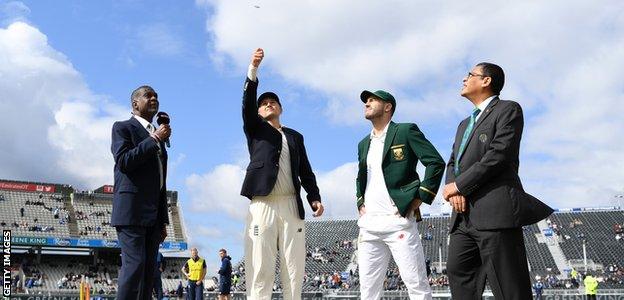
England's only defeat against South Africa came after they lost the toss and were asked to bat second
England are in danger of becoming a one-dimensional team, of only being able to win when they bat first.
Under Bayliss, England have lost nine and won only three of their matches when batting second, a win-loss ratio that has them sixth best of the 10 teams to have played Test cricket in that period.
It is a problem that is once again rooted in runs. When England bat first, they average 38 runs per wicket, the third best in the world. Batting second, that drops to 25, seventh on the list.
It is an issue that needs addressing quickly. When England won in Australia in 2010-11, their three Test victories came when batting second.
"If you have only two or three of your top six contributing, you won't win many games batting second because pitches get harder to bat on," said Swann.
"In Australia, all of your top six have to have great tours. Most of ours scored truckloads when we won there in 2010-11.
"England aren't far off being a very good team, but you can't rely on two or three players to score all your runs every week."
Wood's fitness key to England hopes
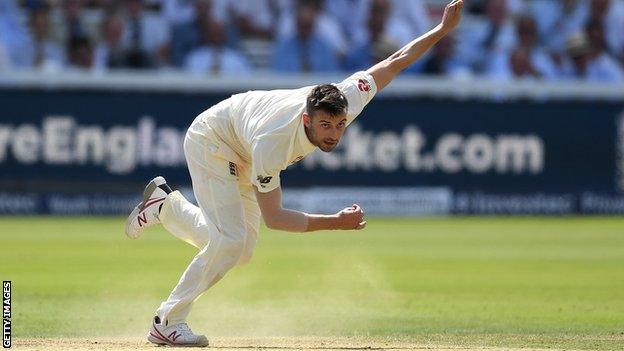
Mark Wood has played only 10 Tests since making his debut in 2015 because of injuries
We are told time and again that, to win in Australia, a visiting team must possess express pace.
The Kookaburra ball on hard pitches offers less assistance to fast bowlers than a Dukes ball on moist English surfaces, so velocity and intimidation become invaluable weapons. Remember Mitchell Johnson?
Pure speed is not the only way to succeed down under, mind.
Australia's Glenn McGrath pummelled batsmen into submission with his relentless accuracy, James Anderson got the ball to reverse swing in 2010-11, and Chris Tremlett found awkward, steepling bounce in the same series.
Still, it's hard to imagine England winning in Australia without Wood, their paciest option, playing at least some part. England, though, have to keep him fit.
The Durham bowler made his return in the first Test after 18 months out, but lasted only two matches before succumbing to a heel problem.
Even if he is good to go in Australia, England would have to be sure he is a better option than Woakes and Roland-Jones.
Again, they could look to the template of 2010-11. Then, the pacy Steven Finn was used in the first three Tests before being replaced by swing and seam bowler Tim Bresnan for the last two. Wood and Woakes could be the Finn and Bresnan of 2017-18.
"It's one thing asking for pace, but is it accurate and effective?" asked Graeme Smith, who led South Africa to two series wins in Australia.
"It's not often you get movement, so yes you need pace, but also good bounce and consistency.
"England must ask what is the best option to take 20 wickets. They need an attack that is well-rounded."
- Published7 August 2017

- Published7 August 2017
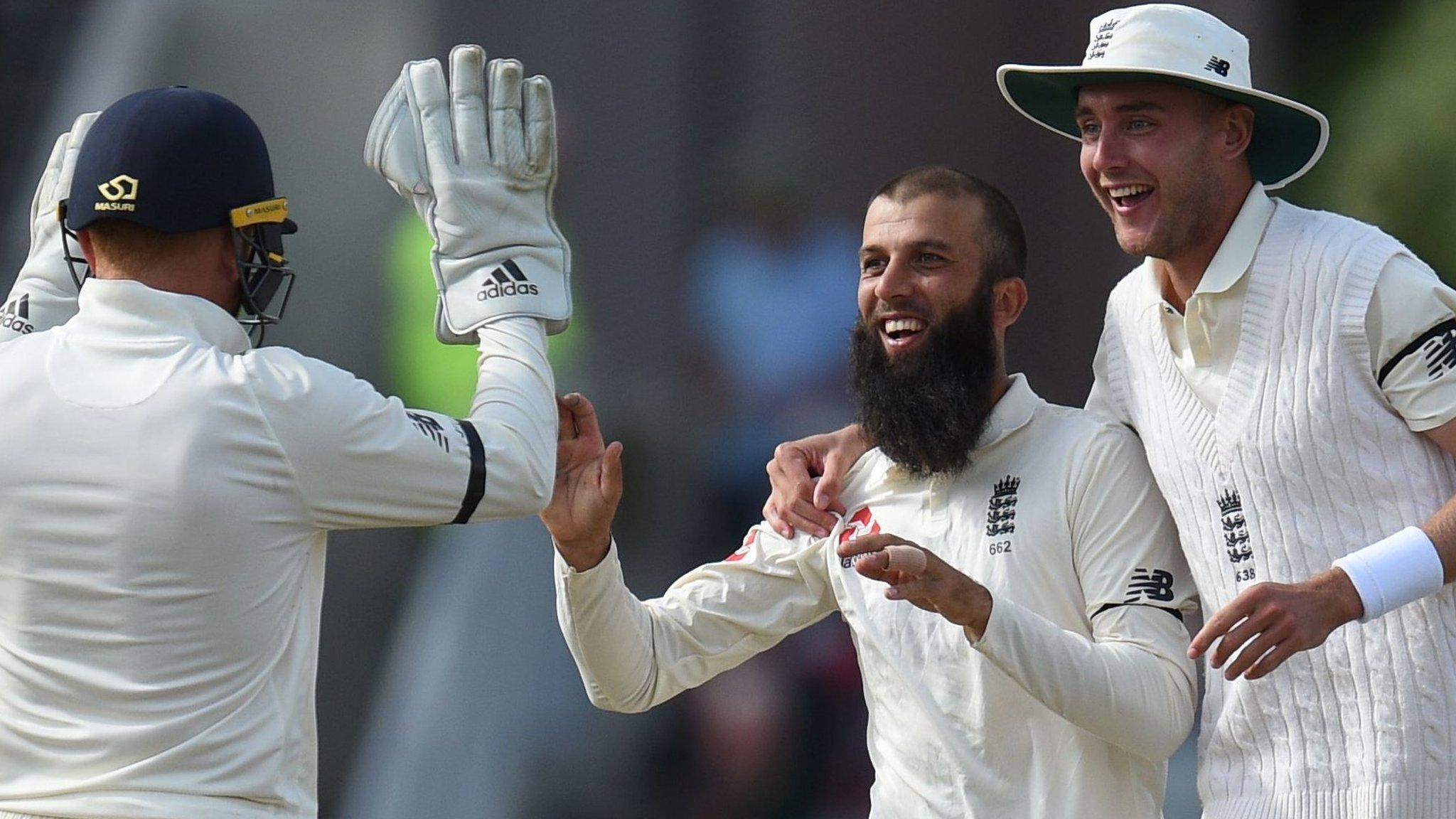
- Published7 August 2017
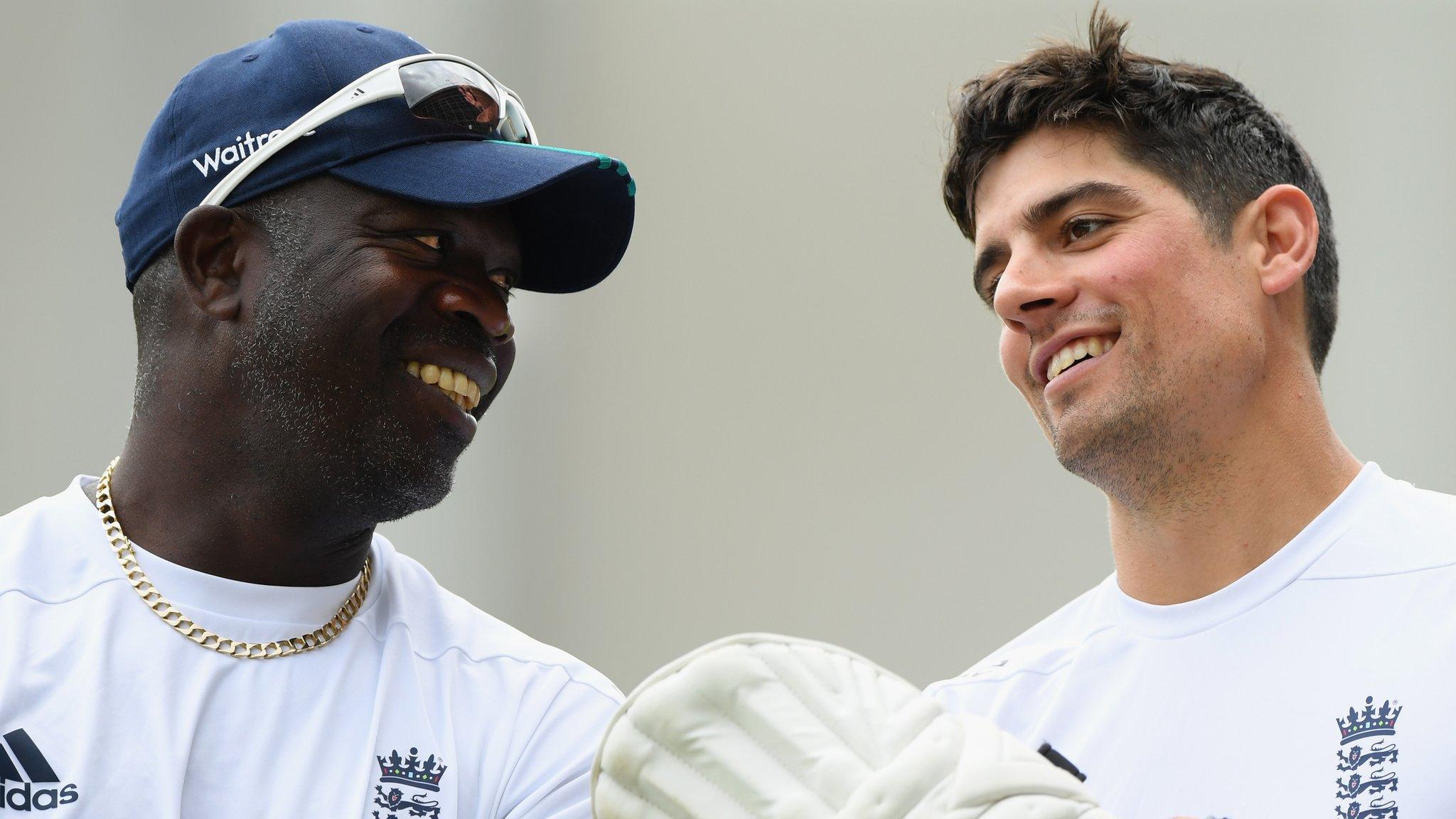
- Published7 August 2017
